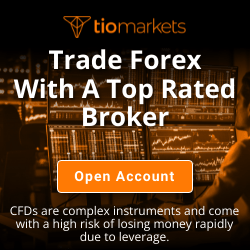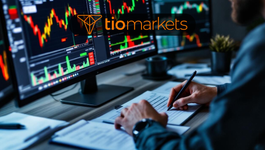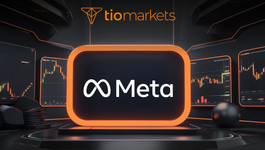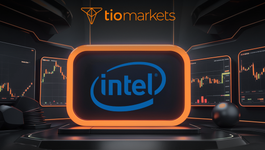ETFs Explained: Learn to Trade | TIOmarkets
BY TIOmarkets
|June 13, 2024Exchange-Traded Funds (ETFs) have emerged as a popular investment vehicle for traders and investors alike, offering the flexibility of stock trading combined with the diversified exposure of mutual funds. This article aims to demystify ETFs, exploring their structure, benefits, and how they fit into the trading landscape at TIOmarkets.
What Are ETFs?
At their core, ETFs are investment funds traded on stock exchanges, much like individual stocks. They hold assets such as stocks, commodities, or bonds and generally operate with an arbitrage mechanism designed to keep the trading close to its net asset value, though deviations can occur.
Types of ETFs
ETFs come in various forms, each offering exposure to different asset classes or investment strategies. Equity ETFs track specific indices or sectors, Bond ETFs invest in government or corporate debt, and Commodity ETFs offer exposure to physical goods like gold or oil. There are also Specialty ETFs, including those focused on emerging markets or employing strategies like smart beta.
Understanding the different types of ETFs is crucial for traders looking to diversify their portfolios or target specific market segments.
How ETFs Work
ETFs are bought and sold during the trading day at market price, not at net asset value (NAV) at the end of the trading day like mutual funds. This real-time trading capability, combined with the liquidity of ETFs, makes them attractive to both retail and institutional investors.
The creation and redemption process of ETF shares involves large financial institutions, known as authorized participants, which helps to ensure that ETFs trade close to their underlying NAV.
Benefits of Trading ETFs
ETFs offer a range of benefits that make them an appealing option for traders. These include diversification, lower costs, and flexibility.
Diversification
By holding a basket of assets, ETFs provide investors with an easy way to diversify their portfolios. This can help to spread risk and reduce the impact of volatility on individual investments.
Cost Efficiency
ETFs typically have lower expense ratios compared to mutual funds, making them a cost-effective option for investors. Additionally, the ability to trade ETFs like stocks enables investors to implement cost-efficient trading strategies.
Flexibility and Liquidity
The ability to buy and sell ETFs throughout the trading day, at market price, offers traders flexibility not found in mutual funds. This, combined with high liquidity, makes it easier to enter and exit positions.
Risks of ETF Trading
While ETFs offer numerous advantages, they also come with their own set of risks. It's important for traders to be aware of these risks and manage them effectively.
Market Risk
Like any investment, ETFs are subject to market risk. The value of an ETF can decrease due to movements in the underlying assets, which can be influenced by a wide range of factors including economic conditions and market sentiment.
Liquidity Risk
While most ETFs are highly liquid, some specialized or niche ETFs may have lower trading volumes, which can lead to higher spreads and potentially impact the ease of trading.
Tracking Error
Tracking error refers to the discrepancy between the performance of an ETF and its underlying index or assets. This can occur due to various factors, including transaction costs and management fees.
Trading ETFs with TIOmarkets
TIOmarkets offers traders the opportunity to engage with the dynamic world of ETF trading. Our platform provides access to a wide range of ETFs, enabling traders to diversify their portfolios and explore various market segments.
Choosing the Right ETFs
Selecting the right ETFs requires research and consideration of your trading goals and risk tolerance. TIOmarkets provides resources and tools to help traders make informed decisions.
Strategies for ETF Trading
Effective ETF trading strategies can include long-term investment for diversification, short-term trading to capitalize on market movements, or a combination of both. TIOmarkets supports traders in developing strategies that align with their financial objectives.
ETFs have gained popularity due to their flexibility and ease of trading. The ability to access a diversified portfolio with a single trade is a significant advantage for investors looking to spread their risk across various asset classes. Additionally, the transparency of ETF holdings allows investors to know exactly what they are investing in, unlike some mutual funds.
ETFs vs. Mutual Funds
While both ETFs and mutual funds offer diversified investment options, there are key differences between the two. ETFs trade on exchanges like stocks, with prices fluctuating throughout the trading day, while mutual funds are priced at the end of the trading day. This real-time pricing of ETFs provides investors with the opportunity to react to market movements quickly.
Another difference is the cost structure. ETFs typically have lower expense ratios compared to mutual funds, making them an attractive option for cost-conscious investors. Additionally, ETFs are more tax-efficient than mutual funds, as they are structured to minimize capital gains distributions.
Benefits of ETFs over Mutual Funds
ETFs offer several advantages over mutual funds, including intraday trading, lower costs, tax efficiency, and transparency. The ability to trade ETFs throughout the day allows investors to take advantage of market opportunities as they arise, while the lower expense ratios can lead to higher returns over time.
Furthermore, the tax efficiency of ETFs means investors may incur fewer capital gains taxes compared to mutual fund investors. This can result in higher after-tax returns for ETF investors, enhancing the overall performance of their investment portfolios.
Drawbacks of ETFs compared to Mutual Funds
While ETFs have many benefits, they also have some drawbacks compared to mutual funds. One potential downside is the brokerage commissions associated with buying and selling ETFs, which can erode returns for investors making frequent trades. Additionally, the intraday trading of ETFs can lead to increased volatility and potential overtrading by investors.
Moreover, the structure of ETFs, with their creation and redemption process involving authorized participants, can introduce additional complexities compared to mutual funds. Understanding these differences is essential for investors to make informed decisions based on their investment objectives and preferences.
Overall, both ETFs and mutual funds have their own advantages and drawbacks, and the choice between the two depends on individual investor preferences and financial goals. TIOmarkets provides a platform that caters to a wide range of investment strategies, including ETF trading, to meet the diverse needs of traders in the financial markets.
ETF Trading Strategies
Developing effective ETF trading strategies is essential for maximizing returns and managing risk in the financial markets. Traders can employ various approaches based on their investment goals and market outlook.
Passive ETF Investing
Passive ETF investing involves buying and holding ETFs to track specific indices or market segments. This strategy aims to replicate the performance of the underlying assets and is suitable for investors seeking long-term growth and diversification.
Passive ETF investing is a low-cost strategy that requires minimal maintenance, making it ideal for investors looking for a hands-off approach to portfolio management.
Active ETF Trading
Active ETF trading involves frequent buying and selling of ETFs to capitalize on short-term market movements. This strategy requires a more hands-on approach, with traders actively monitoring market conditions and making strategic trades based on their analysis.
Active ETF trading can be more complex and risky compared to passive investing, but it offers the potential for higher returns for traders who can effectively time the market and manage risk effectively.
Sector Rotation
Sector rotation is a strategy that involves shifting investments between different sectors of the economy based on economic cycles and market trends. By rotating investments into sectors expected to outperform and out of sectors expected to underperform, investors can potentially enhance returns and reduce risk.
Sector rotation requires a deep understanding of macroeconomic factors and sector-specific dynamics, making it a more advanced strategy suited for experienced traders who can analyze market trends and make informed sector allocation decisions.
ETF trading strategies can vary widely based on individual risk tolerance, investment horizon, and market outlook. It's essential for traders to develop a clear strategy that aligns with their financial goals and to continuously monitor and adjust their positions based on changing market conditions.
ETF Selection Criteria
Choosing the right ETFs to trade is a critical decision that can impact the performance of your investment portfolio. Several key factors should be considered when selecting ETFs to ensure they align with your investment objectives and risk tolerance.
Asset Class Exposure
When selecting ETFs, consider the asset classes you want exposure to in your portfolio. Whether you're looking for equity, fixed income, commodity, or sector-specific exposure, there are ETFs available to meet your investment needs.
Understanding your desired asset class exposure can help you narrow down the universe of ETFs and focus on those that align with your investment strategy and risk profile.
Expense Ratios and Fees
Expense ratios and fees can significantly impact the overall returns of an ETF investment. Lower expense ratios translate to higher returns for investors, so it's essential to compare the costs of different ETFs before making investment decisions.
Additionally, consider any trading fees or commissions associated with buying and selling ETFs, as these costs can also affect your investment performance over time.
Liquidity and Trading Volume
Liquidity is a crucial factor to consider when trading ETFs, as it impacts the ease of buying and selling shares at fair market prices. ETFs with higher trading volumes typically have tighter bid-ask spreads, reducing trading costs for investors.
Before investing in an ETF, check its average trading volume and liquidity to ensure you can easily enter and exit positions without incurring significant transaction costs.
Tracking Error and Performance
Tracking error measures how closely an ETF follows its underlying index or benchmark. Lower tracking error indicates better performance alignment, making the ETF more effective in tracking its intended market exposure.
Reviewing historical performance data and tracking error metrics can help you assess the effectiveness of an ETF in replicating its target index and make informed decisions about its suitability for your investment portfolio.
By considering these key criteria and conducting thorough research, traders can select ETFs that align with their investment goals and risk preferences. TIOmarkets provides a comprehensive platform for traders to access a diverse range of ETFs and make informed investment decisions based on their individual criteria.
ETF Trading Tips
Successfully trading ETFs requires a combination of market knowledge, strategic planning, and risk management. Implementing the following tips can help traders navigate the complexities of ETF trading and enhance their overall trading performance.
Stay Informed
Stay up to date with market news, economic indicators, and sector-specific developments that can impact the performance of ETFs. Being informed about market trends and events can help you make better trading decisions and capitalize on opportunities.
Set Clear Goals
Define your trading goals, risk tolerance, and investment horizon before trading ETFs. Establishing clear objectives can guide your trading strategy and help you make informed decisions based on your financial goals.
Diversify Your Portfolio
Diversification is key to managing risk in your investment portfolio. By spreading your investments across different asset classes and sectors, you can reduce the impact of volatility on your overall portfolio performance.
Use Stop-Loss Orders
Implementing stop-loss orders can help you limit potential losses and protect your capital in volatile market conditions. Setting predefined exit points for your trades can prevent emotional decision-making and preserve your trading capital.
Monitor Performance
Regularly review the performance of your ETF investments and assess their alignment with your trading goals. Monitoring performance metrics can help you identify strengths and weaknesses in your trading strategy and make necessary adjustments to optimize your returns.
By following these tips and incorporating best practices into your ETF trading strategy, you can enhance your trading skills, manage risk effectively, and achieve your financial objectives in the dynamic world of ETF trading. TIOmarkets is dedicated to supporting traders with the resources and tools they need to succeed in the financial markets.
Conclusion
In conclusion, ETFs offer a versatile and efficient way to trade and invest in a wide range of asset classes. By understanding the fundamentals of ETFs, their benefits, and associated risks, traders can leverage these instruments to enhance their trading strategies. TIOmarkets is committed to providing traders with the knowledge, tools, and platform to successfully navigate the world of ETF trading.
Start Trading ETFs with TIOmarkets
Ready to dive into the dynamic world of ETF trading? Join TIOmarkets, a top-rated forex broker, and expand your portfolio with over 300 instruments across 5 markets. With our low fees and robust online trading platform, you can trade Forex, indices, stocks, commodities, and futures markets with ease. Benefit from our comprehensive educational resources and step-by-step guides designed to elevate your trading skills. Don't miss out on the opportunity to be part of a global community of over 170,000 traders in 170 countries. Create a Trading Account today and start your journey to trading success with TIOmarkets.

Risk disclaimer: CFDs are complex instruments and come with a high risk of losing money rapidly due to leverage. You should consider whether you understand how CFDs work and whether you can afford to take the high risk of losing your money. Never deposit more than you are prepared to lose. Professional client’s losses can exceed their deposit. Please see our risk warning policy and seek independent professional advice if you do not fully understand. This information is not directed or intended for distribution to or use by residents of certain countries/jurisdictions including, but not limited to, USA & OFAC. The Company holds the right to alter the aforementioned list of countries at its own discretion.
Join us on social media

Behind every blog post lies the combined experience of the people working at TIOmarkets. We are a team of dedicated industry professionals and financial markets enthusiasts committed to providing you with trading education and financial markets commentary. Our goal is to help empower you with the knowledge you need to trade in the markets effectively.
Related Posts





